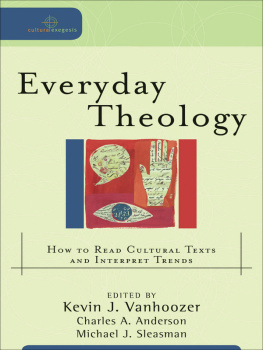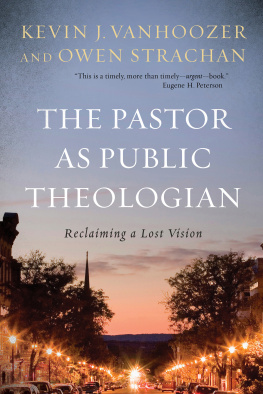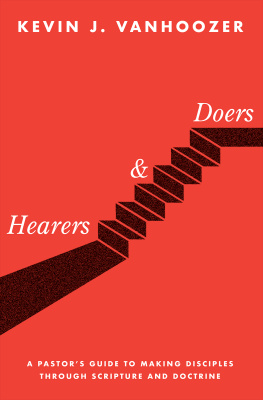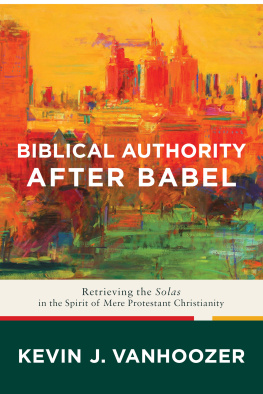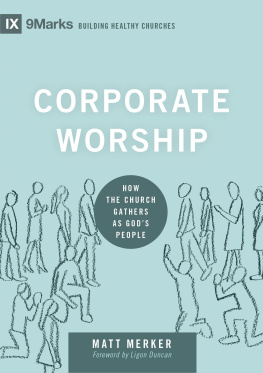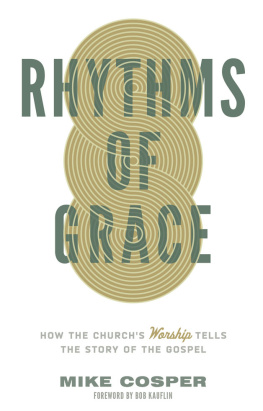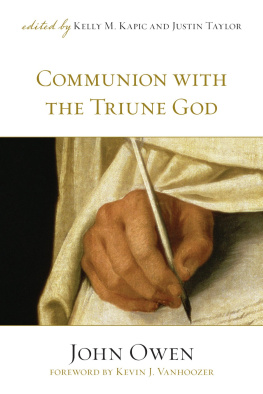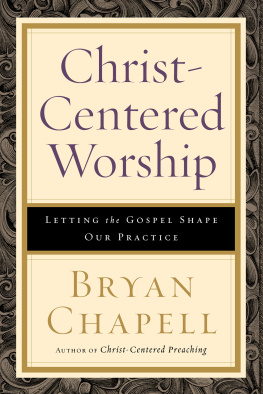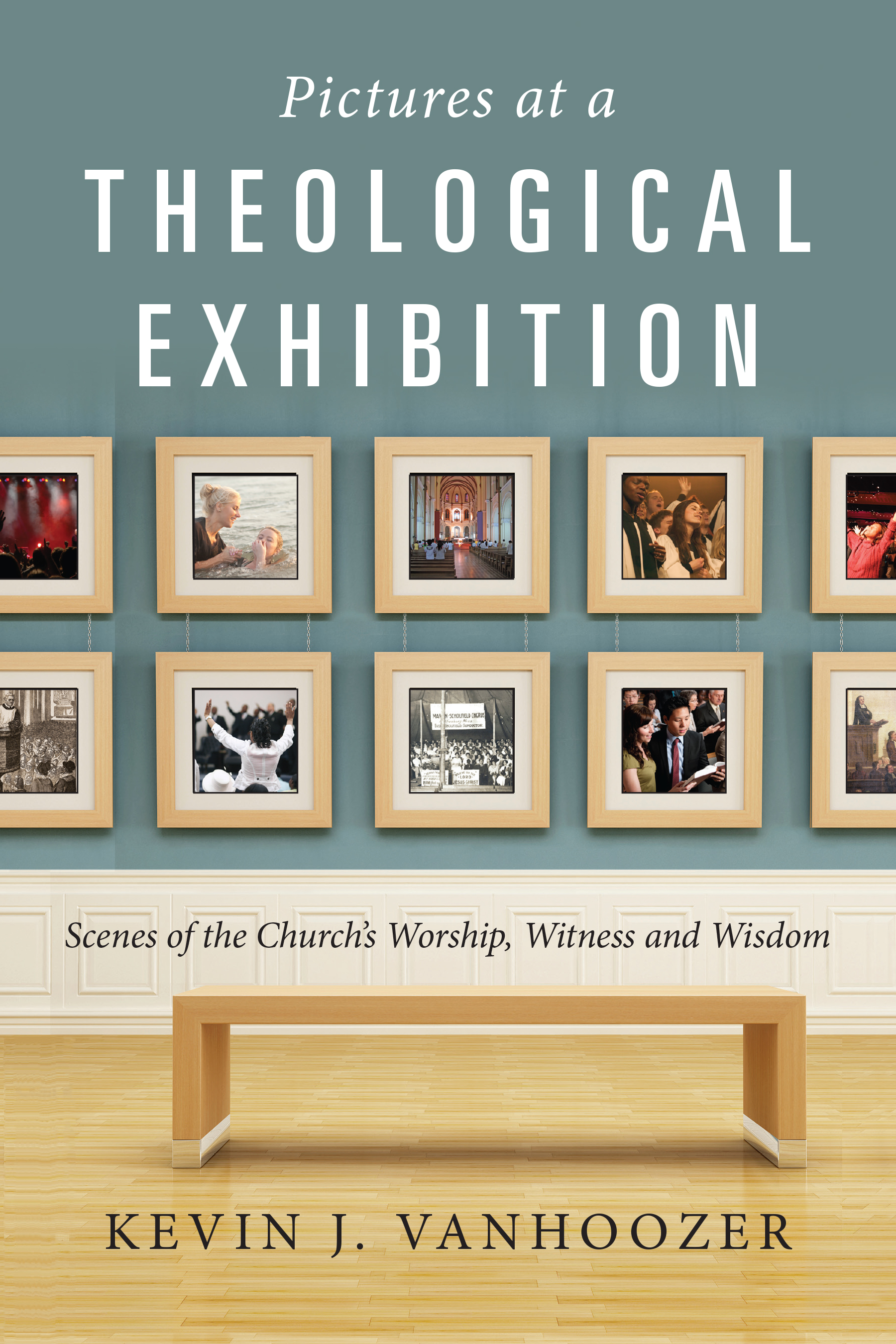InterVarsity Press
P.O. Box 1400, Downers Grove, IL 60515-1426
ivpress.com
2016 by Kevin J. Vanhoozer
All rights reserved. No part of this book may be reproduced in any form without written permission from InterVarsity Press.
InterVarsity Pressis the book-publishing division of InterVarsity Christian Fellowship/USA, a movement of students and faculty active on campus at hundreds of universities, colleges and schools of nursing in the United States of America, and a member movement of the International Fellowship of Evangelical Students. For information about local and regional activities, visit intervarsity.org .
Scripture quotations, unless otherwise noted, are from The Holy Bible, English Standard Version, copyright 2001 by Crossway Bibles, a division of Good News Publishers. Used by permission. All rights reserved.
Cover design: Cindy Kiple
Images:
art gallery: archideaphoto/iStockphoto
baptism: hept27/iStockphoto
choir singing: Deposit Photos/Glow Images
church service: Christopher Futcher/iStockphoto
Cripplegate church: A service in Old Cripplegate Church, English School, private collection/Bridgeman Images group worship: Deposit Photos/Glow Images
Martin Luther preaching: Martin Luther preaching, German School, Private Collection / The Stapleton Collection / Bridgeman Images
Martin-Scholfield Choris: Martin-Scholfield Choir, Lake County Discovery Museum /UIG / Bridgeman Images
old Catholic church: Deposit Photos/Glow Images
worship concert: dvan/iStockphoto
ISBN 978-0-8308-9379-9 (digital)
ISBN 978-0-8308-3959-9 (print)
Library of Congress Cataloging-in-Publication Data
Names: Vanhoozer, Kevin J., author.
Title: Pictures at a theological exhibition : scenes of the churchs worship, witness, and wisdom / Kevin J. Vanhoozer.
Description: Downers Grove : InterVarsity Press, 2016. | Includes index.
Identifiers: LCCN 2015050916 (print) | LCCN 2016001992 (ebook) | ISBN 9780830839599 (pbk. : alk. paper) | ISBN 9780830893799 (eBook)
Subjects: LCSH: Church. | Public worship. | Theology.
Classification: LCC BV600.3 .V35 2016 (print) | LCC BV600.3 (ebook) | DDC 230--dc23
LC record available at http://lccn.loc.gov/2015050916
To my faculty colleagues at
Trinity Evangelical Divinity School
CONTENTS
Conclusion
The Man with the X-Rho Eyes (A Sermon on 2 Kings 6:14-23)
PREFACE
Theology exists to serve the church. Its vocation is to help people think, imagine and understand how all areas of life relate to the God of the gospel made known in the Scriptures. Theology ministers understanding by setting forth the biblically attested meaning of the words and deeds of the triune God, inviting all those with eyes and ears to understand to participate in what the Father, Son and Spirit are doing in the world to make all things new. Theology thus helps disciples fulfill their vocation to be little Christs: saints who know how to embody the mind of Christ everywhere, at all times and to everyone.
Theology exists to serve the church, but the sobering reality is that many churches are not particularly inclined to accept theologys help. Indeed, some churches avoid all deliberation about doctrine like the plague. After all, doctrine divides, and in any case who is in a position to know which doctrinal position is correct? These churches would rather keep the conversation going than arrive at a conclusion. At the other end of the spectrum are churches in which the doctrinal watchword is not relative but absolute. The challenge here is to relate frozen doctrinal formulations to a changing cultural climate. The way forward is to cultivate minds and hearts characterized not only by evangelical fidelity but also by convictional civility, hermeneutical humility and Christian charity.
Despite both its skeptical detractors and its too-certain supporters, theology at its best is the worshipful, witnessing and wise art and science of faithful understanding, and its sole purpose is to edify the churchs worship, witness and wisdom. Theologys special remit is to love the truth of Jesus Christ with mind, heart, soul and strength in order to make straight the way of life in Christ. The chief way that theologians respond to their mandate is to reflect on what God has said and done provisionally in the history of Israel and definitively in the history of Jesus Christ. Theology, then, is an exercise in creative fidelity (or faithful creativity), where new ways of articulating understanding are accountable both to the magisterial authority of prior canonical texts and to the ministerial authority of catholic interpretive traditions.
In a previous collection of essays, First Theology (also published by InterVarsity Press), I attempted to navigate my way through the postmodern challenges confronting the academy, especially in the humanities. The humanities share with biblical studies and theology an interest in hermeneutics: how to understand textual meaning and interpretation. The various chapters of First Theology represented my best efforts to explain how God, Scripture and hermeneuticsin their humanity and divinitycome together in the pattern of theological authority and comprise a three-stranded prolegomenal cord. This collection is different (I had to resist the urge to title it Second Theology). The focus here is not on theories of interpretation debated in the academy but on the practice of biblical interpretation that makes up the life of the church. Each of the essays (only three of which have been previously published) begins with a real-life issue on the borderlands of church, society and academy and then searches for understandinga way for the community of faith to live this understanding out. With the exception of the introduction, chapter 5 and chapter 11, all these essays were originally delivered orally, and though I have revised them (and added footnotes), I have tried to preserve their less formal tone.
In this book I attempt to stand in the breach (Ezek 22:30) between theology and the life of the church, theory and practice, knowledge and obediencenot simply to occupy space but to fill it by creating connections. The overall concern is to rehabilitate a biblically invigorated imagination as a means and mode of doing theologyor rather, as a key to healing the breach between knowing, feeling and doing as well as the distance between Scripture and the churchs contemporary situation. When captive to Christ, the imagination is the capacity to envision all of reality as related to God the Father in the Son through the Spirit. And to the extent that the vision of a God-so-loved-world orients all of life, it is a capacity that is as practical as it is theological.
We can go further. If what disciplines the imagination is first and foremost verbal rather than visual, then we can say that theological imagination is a mode of faith, a way of believing without seeing (Jn 20:29) and, as such, comes not from fanciful speculation but rather from the hearing of the biblical word (Rom 10:17). Having said that, this book is not primarily a theoretical reflection on the nature of imagination. There are some theoretical reflections (and some attempts at definition), but ultimately the vision must be caught, not simply taught. To that end, many of the chapters show the biblically grounded, theologically formed evangelical imagination at work, exhibited in concrete scenes of Christian life, where contemporary culture confronts the church with new problems and opportunities.


